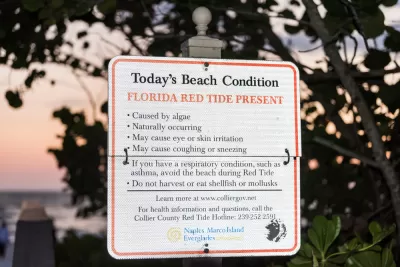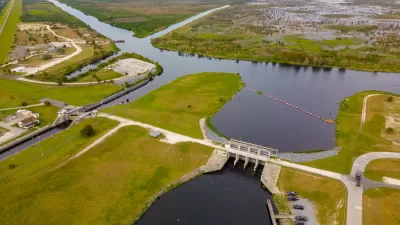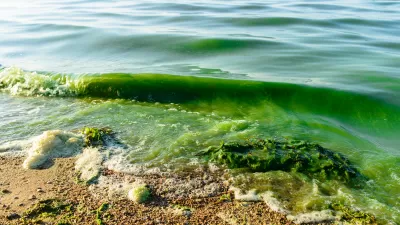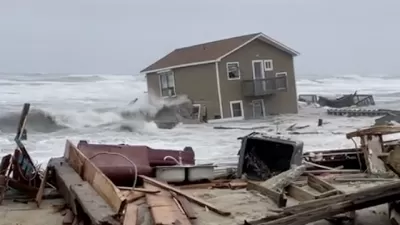A particularly devastating red tide is ravaging the southwest Florida coast. The question of whether humans have caused the intensity of the event is still up for debate, according to this article.

Maya Wei-Haas reports on the red tide devastating Florida's beaches this year, and asks the question of how much blame human activity can be assigned to the devastation.
Here's how Wei-Haas describes the cause and effect of the red tide:
Thousands of sea creatures now litter many of southern Florida’s typically picturesque beaches. Most are fish—mullet fish, catfish, pufferfish, snook, trout, grunt, and even the massive goliath grouper. But other creatures are also washing ashore—crabs, eels, manatees, dolphins, turtles, and more. It's a wildlife massacre of massive proportions. And the cause of both the deaths and toxic, stinging fumes is a bloom of harmful algae that scientists say is the region’s worst in over a decade.
The red tide takes its name from its rust-brown color, according to Wei-Haas, and in Florida "the culprit is usually the tiny, plant-like alga known as Karenia brevis, which produces toxins, dubbed brevetoxins, that cause both gastrointestinal and neurological problems when eaten."
Records of red tides in Florida date back to 1500, but this year's devastation has inspired a debate about whether humans are responsible for the scale of the devastation. The Karenia brevis is attracted to the Florida coast for natural reasons like salinity and temperature, but other researchers "believe the algae feeds on the nutrient-rich agricultural runoff from land, causing it to stick around for longer and rage more intensely," according to Wei-Haas. Red tides also tend to follow massive storms, which occur naturally, of course, but also have begun to increase in frequency and intensity due to the effects of human-caused climate change.
FULL STORY: Red Tide Is Devastating Florida's Sea Life. Are Humans to Blame?

Planetizen Federal Action Tracker
A weekly monitor of how Trump’s orders and actions are impacting planners and planning in America.

Restaurant Patios Were a Pandemic Win — Why Were They so Hard to Keep?
Social distancing requirements and changes in travel patterns prompted cities to pilot new uses for street and sidewalk space. Then it got complicated.

Map: Where Senate Republicans Want to Sell Your Public Lands
For public land advocates, the Senate Republicans’ proposal to sell millions of acres of public land in the West is “the biggest fight of their careers.”

Maui's Vacation Rental Debate Turns Ugly
Verbal attacks, misinformation campaigns and fistfights plague a high-stakes debate to convert thousands of vacation rentals into long-term housing.

San Francisco Suspends Traffic Calming Amidst Record Deaths
Citing “a challenging fiscal landscape,” the city will cease the program on the heels of 42 traffic deaths, including 24 pedestrians.

California Homeless Arrests, Citations Spike After Ruling
An investigation reveals that anti-homeless actions increased up to 500% after Grants Pass v. Johnson — even in cities claiming no policy change.
Urban Design for Planners 1: Software Tools
This six-course series explores essential urban design concepts using open source software and equips planners with the tools they need to participate fully in the urban design process.
Planning for Universal Design
Learn the tools for implementing Universal Design in planning regulations.
Heyer Gruel & Associates PA
JM Goldson LLC
Custer County Colorado
City of Camden Redevelopment Agency
City of Astoria
Transportation Research & Education Center (TREC) at Portland State University
Camden Redevelopment Agency
City of Claremont
Municipality of Princeton (NJ)





























